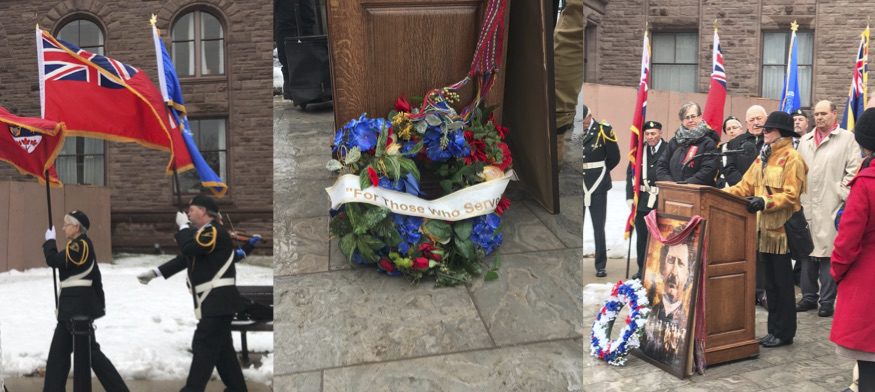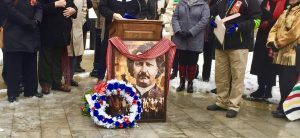Taking an in-depth look into the Ontario education system and what the curriculum teaches about Louis Riel and Indigenous culture, history and overall importance in modern-day Canada.
 (Queen’s Park Louis Riel day event on Nov. 16, 2018 in Toronto. RSJ/Giulia Fiaoni)
(Queen’s Park Louis Riel day event on Nov. 16, 2018 in Toronto. RSJ/Giulia Fiaoni)
Métis education lacking in Ontario on Louis Riel Day
Written by Emma Sandri
Who identifies and who can identify as Métis has become a subject of debate over the past few years.
Historically, the Métis people have been those who have been direct descendants of Indigenous Canadians and the first European settlers. However, in recent years the term Métis has been used to describe a multitude of mixed-race Indigenous peoples.
“People hardly know anything about what that means. It really is kind of a term that has become, currently, really contentious because of people who don’t necessarily historically connect to the Métis people and who just fit that poor understanding of mixed-race,” said Kyl Elliott, a liaison for the First Nations, Métis and Inuit Education Association of Ontario. “There is history of this nation rising and this cultural and Indigenous civilization identity rising.”
Speak Visually. Create an infographic with Visme
Elliott is a part of a group which aims to promote education on the history and experiences of Indigenous Canadians in Ontario.
“From my perspective there is a lot of work that needs to be done but there are only so many hours in the day and there are only so many dollars in everybody’s budget,” said Elliott.
Education regarding the Métis is particularly poignant in Ontario, wherein 80 per cent of Canada’s total Métis population resides according to a 2016 census conducted by Statistics Canada.
In particular, Elliott says there needs to be more education about historical Métis figures such as Louis Riel.
Riel was a Métis and a founder of Manitoba who was executed in 1885 by the Canadian government. On Friday Nov. 16, the Métis Nation of Ontario commemorated Riel and his legacy at Queen’s Park.
“Reconciliation isn’t about words on a page,” said former premier Kathleen Wynne while at the event. “Reconciliation is about the tough work of coming to agreement on issues that are hard to come to agreement on, that require blood and sweat and tears in terms of the commitment that we are willing to make.”
As reported by CBC, Wynne’s liberal government committed to update elementary and secondary school curriculum to teach Ontario students about the legacy of residential schools.
A part of the liberal’s “Journey Together” plan, the proposed update was created in response to recommendations made by the Truth and Reconciliation Commission.
The former premier’s plan would have altered the content of history, geography, civics and social studies courses to include mandatory material covering Indigenous culture. However over the summer, the new conservative government of Ontario cancelled the provincial update.
“I feel so strongly that there is so much work to do and I am going to work with the members of this house to make sure that … reconciliation and truth is taught in our schools,” said Wynne.
The 2016 census by Statistics Canada shows that Indigenous people account for 4.9 per cent of the total population of Canada, with the Métis representing 1.7 per cent of Canadians.
The scrapping of new curriculum was a cause for “concern” according to the president of Métis Nation of Ontario, Margaret Froh.
“We have to get that into the schools, the little ones need to understand our history, who Louis Riel was and who the Métis people are today,” said Froh. “We are not frozen in time, we are not simply a part of the history of this country. We are actually a vibrant part of what Canada is today.”





Leave a Reply